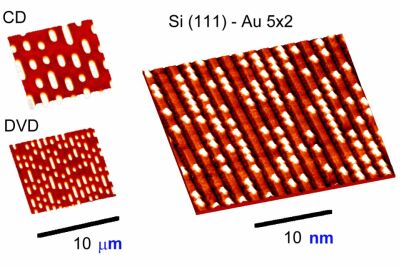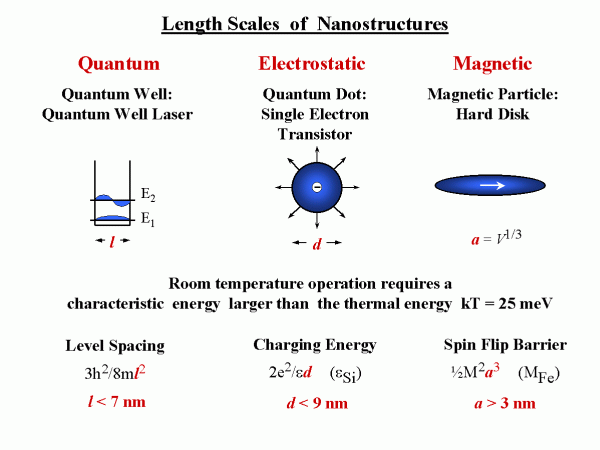
Interest in nanotechnology is growing rapidly. Now it is possible to arrange atoms into structures that are only a few nanometers in size. A nanometer is about four atom diameters or 1 / 50 000 of a human hair. (Your fingernails grew about a nanometer while reading this.) A particularly attractive goal is the self-assembly of nanostructures, which produces large amounts of artificial materials with new properties. In order to connect nanostructures to the more familiar world of microstructures and microelectronics, one wants to to build up larger assemblies by guided self-assembly.
Some of these exotic nanostructures have made it already onto our desktops. Magnetic nanolayers exhibit the effect of "giant magnetoresistance" (GMR), which makes them currently the best material for reading heads of hard disks. Arrays of nanowires may play a crucial role in future computers: The main speed limitation will not be the switching time of a transistor, but the time that the signals travel along the wires (see J. Birnbaum and R. S. Williams, Physics Today, January 2000, p. 38).
The picture below illustrates the potential of nano-devices for data storage. On the left are images of two familiar data storage media, the CD-ROM and the DVD. On the right is a self-assembled memory at a silicon surface that is formed by depositing a small amount of gold. It looks like a CD, except that the length scale is in nanometers, not micrometers. The corresponding storage density is a million times higher. The surface formats itself into atomically-perfect stripes (red) with extra atoms on top (white). These atoms are neatly lined up at well-defined sites along the stripes, but occupy only about half of them. It is possible to use the presence of an atom to store a 1, and the absence to store a 0. The ultimate goal would be to build a data storage medium that needs only a single atom per bit. The big question is how to write and read such bits efficiently.

What is so special about the nanometer length scale to generate all the excitement about nanostructures? Take a piece of silicon and consider its band gap, the key for applications in electronics. Shrinking the piece to 0.1 micron (= 100 nanometers) does not affect the band gap, but going down to a few nanometers increases the band gap and causes silicon to emit visible light.
Looking at it from a more general perspective, one finds that there are three independent length scales in physics that converge onto the single digit nanometer regime, as shown below. Quantum mechanics, electrostatics, and magnetism conspire to produce a common length scale in the single-digit nanometer regime. These three length scales determine the operation of electronic devices, such as a quantum well laser, a single electron transistor, and a magnetic hard disk. In order to operate at room temperature, quantum wells and quantum dots have to smaller than a few nanometers, and magnetic particles need to be larger than that.

Brief tutorial about nanostructures